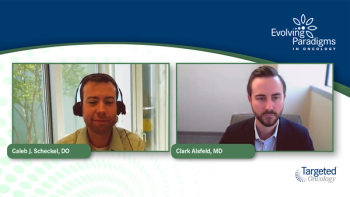
Tissue, ctDNA, and ESR1 Mutation Testing
Panelists discuss the expanding array of treatment options for metastatic hormone receptor–positive breast cancer, emphasizing the critical role of molecular testing—both tissue biopsy and circulating tumor DNA (ctDNA)—in identifying targets and guiding therapy selection, with serial ctDNA testing enabling dynamic monitoring of tumor evolution and timely adjustments to personalized treatment plans.
Episodes in this series

We should definitely appreciate the fact that there are now so many treatment options available—both longstanding therapies and exciting new agents that continue to emerge. The recent ASCO meeting highlighted this surge in innovation, making it one of the most intense and promising conferences in recent years. However, to effectively use these targeted treatments, identifying the right molecular targets in each patient’s tumor is essential.
In practice, when a patient is newly diagnosed with metastatic hormone receptor–positive breast cancer, a tissue biopsy is typically performed to confirm the diagnosis and for molecular testing. At the same time, circulating tumor DNA (ctDNA) ctDNA testing is often ordered due to its rapid turnaround, allowing clinicians to consider targeted therapies early, even in the first-line setting. ctDNA testing complements tissue sequencing by providing a less invasive way to monitor tumor genetics over time.
As the disease progresses—sometimes years after the initial diagnosis—ctDNA testing is repeated at each progression to detect emerging mutations like such as ESR1, which often develop as mechanisms of resistance to endocrine therapy. This serial monitoring allows for timely treatment adjustments based on evolving tumor biology. This approach maximizes the use of ctDNA as a dynamic and powerful tool, alongside tissue testing whenever feasible, to guide personalized treatment decisions in metastatic breast cancer.







































